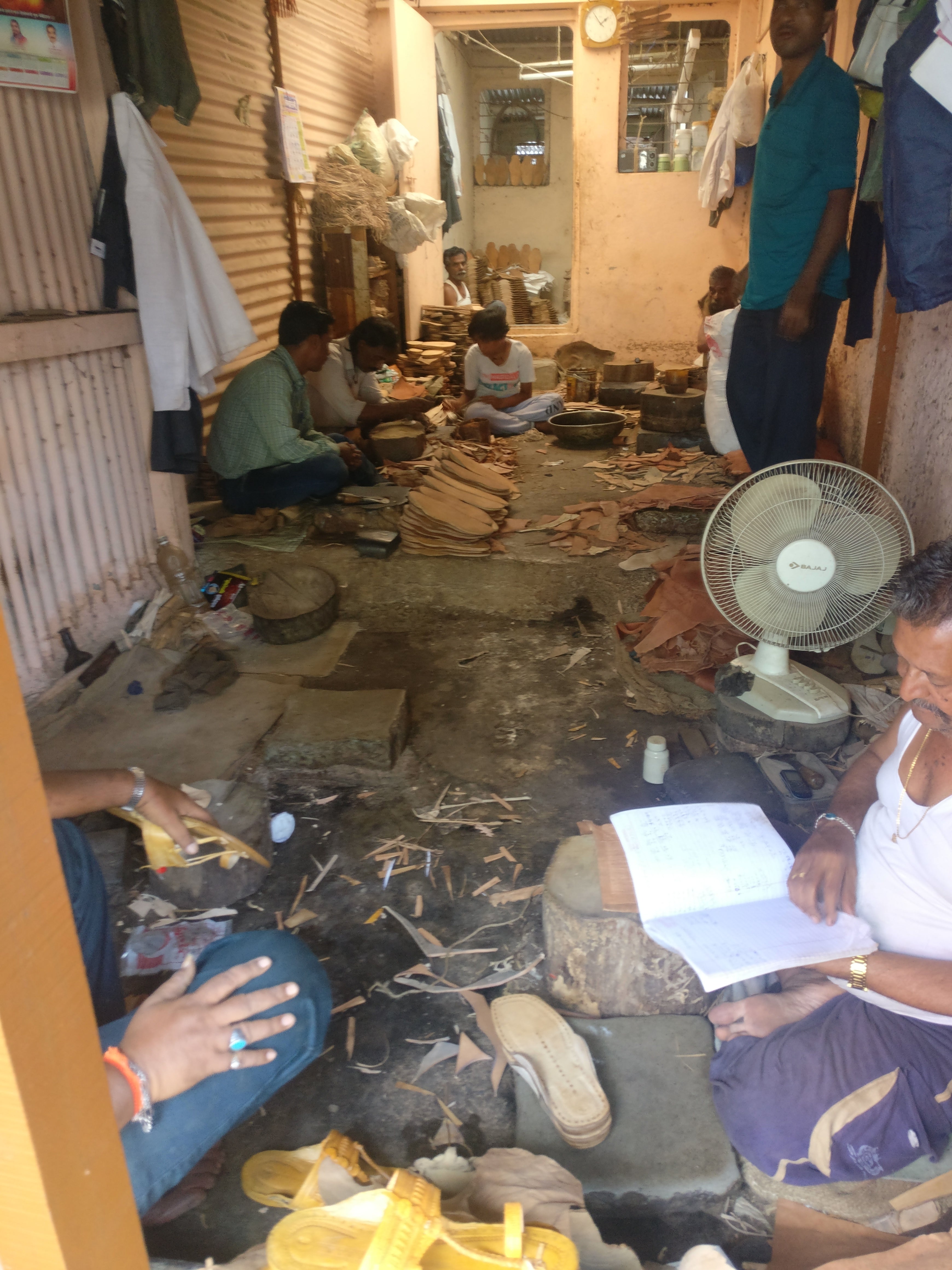Deepak Tate shuffles through a folder of photographs and honours. There is a picture of him handing over a pair of Kolhapuri chappals to former Prime Minister PV Narasimha Rao, and another of him meeting former President
Three years ago, he recounts, he even made a pair for
The irony is that just last week Kolhapuri chappals were granted a Geographical Indicator (GI) tag, a coveted, location-specific label that confers on eight districts – four each in Maharashtra and Karnataka – the official and exclusive right to use the term ‘Kolhapuris’.
Akin to an intellectual property right, this tag was given to
With declining profits, irregular leather supply and duplicates filtering into the market, the Kolhapuri chappal industry is struggling to stay afloat, even in its home base. The key issue remains the idea that craftsmen, who learnt the trade from their parents, no longer want to pass it on to their children.
Tate had not heard the news about the GI tag, and wasn’t sure if it would make a difference. “We should get a good price for our products,” he says. “Only if this industry becomes profitable can we hope to bring our kids into this line.” With craftspersons’ daily wages hovering between `150 and `400, the increasing cost of leather and long work hours, it’s not surprising to hear Tate say this.
His neighbour Avinash Mane, who heads Shubham Footwear, has a manufacturing unit that employs about 11 workers, who spend the day hammering and hemming leather, seated on the floor of the workspace. “Labour is scarce,” says Mane. “This is not something you can do with machines.”
In Kolhapur, the scene is much the same. “It’s not an easy job,” says Ramesh Jadhav, 51, who learnt the trade from his father, at the age of 12. Jadhav works for as long as 10 hours every day (starting at 8 am) in Subhash Nagar, where home-based manufacturing units abound. Surrounding him are other men in vests and trousers, heads bent, splicing, marking, stitching and crafting slippers from hunks of leather. Jadhav’s son hasn’t joined in; he is a salesperson in Kolhapur.
“The GI tag will benefit us but not until there are enough artisans,” says Arun Satpute, founder-chairperson of the Kolhapuri Chappal Audhyogik Samuh, who heads his own unit.
“There is less enthusiasm among the younger generation.”
Even though supply is dogged by troubles, demand remains undiminished. “It’s huge,” says Dileep More, the son of a former craftsman who now runs an online business. “The government has brought schemes to promote Kolhapuris, but it doesn’t always reach the craftspeople.”
Believed to have originated in the 12th century, the hand-crafted slippers are thought to have put Kolhapur on the map. Historically made by people from the lower castes, the chappals received a boost with King Shahu Maharaj’s patronage in the 18th century. “He promoted the makers and sported the footwear. If a king is seen to be wearing it, the commoners will follow,” says Supriya Shinde, a local college teacher who has done some research on the industry.
When it to comes to the slippers, the more intricate the craftsmanship, the higher the price, which sometimes starts at `200 and goes beyond `2,000. It may take between one and three days to finish a pair, while its life could range between six months to several years. Though local tanneries in Kolhapur earlier used vegetable dyes to treat the leather, most of the raw
material, which now comes from Tamil Nadu, is chemically treated.
Over the years, Kolhapuri retailers and manufacturers say the industry has steadily declined in Kolhapur itself, and migrated to across the border, where labour and leather is more cheaply available and workers allegedly cut corners.
Sameer Mahajan flips the thick, pale-coloured chappal around and slaps it gently on the palm of his hand. It’s a quintessential Kolhapuri – coffee-coloured and thick-soled. “See this,” he says. “You can tell that this is not hand stitched, because the sole is made of cardboard.” This quick tutorial is delivered at Vaibhav Stores, a 55-year-old outlet that is on the road. Here, news of the GI tag has been welcomed with cautious optimism – but also brought rumblings of discontent. “Why did all eight districts get the tag?” asks Arun Satpute, the head of the samuh. “When our district is Kolhapur, it should belong to Kolhapur only and remain here.” Manoj Gavali, 58, is outraged. Sitting at his store in the main market, he asks: “It’s based on the name of our place, so why are they sharing the credit? They can get their own Athani, Madhbhavi, Sangli or Satara chappal. Why are they using our brand name?” There is even talk in Kolhapur of stakeholders formally opposing the granting of the tag to the other districts.
Across the border, craftsmen and manufacturers concede that the quality is of a lower standard, but bristle at the suggestion that they are piggybacking on the Kolhapur name. “I agree that the work is not as good, but sometimes people do compromise on quality to earn their livelihood,” says Mane, the manufacturer in Nipani. “Kolhapur people run their businesses using chappals made in other districts. So they are using us.”
In the towns of Nipani, Athani or even Madhbhavi, no one has heard about the GI tag, or even understands what it means. They do understand the slipper business though – the primary source of income for most homes here. Pandarnath Bhandare, 60, and his family are stitching and scraping away one weekday afternoon, making chappals that will be sent to Mumbai, Pune, Hyderabad and of course, Kolhapur. “Kolhapur might have the name, but the work is by the people of Madhbhavi,” says Bhandare.
This is because in Kolhapur itself, the industry is struggling as local tanneries shut down some years ago, following environmental concerns, and bringing leather into the state has become expensive. Gavali says a proposal to promote the industry as a cluster was approved some years ago by the state government, but hasn’t been acted upon. The additional GST is a common headache in both states, with complaints that this has further driven up the cost of raw materials. “We no longer get a good rate for leather,” says Mane, “and with the additional tax, we face more losses.”
But not all is not grim. Some youngsters have taken over the retail outlets started by their fathers and grandfathers, and are trying to reinvent the business. At Tip Top Footwear, Rohit Gavali, 30, has posted a four-minute video on the manufacturing process on YouTube. At Rex Stores next door, Rahul Mahale, 28, has an Instagram account with 13,000 followers that he updates daily, and where he sells about 25 pairs a month, thanks to his posts. In Athani, Nikhil Kamble, 19, is managing the family business, which he says is the town’s first Kolhapuri retail outlet. Dileep More, 39, whose father was once a craftsman, sells slippers online to big retailers like FabIndia. “This is our traditional business so we must do something about it,” he says. “When I was growing up, every home in the village used to make chappals.”
Source : https://bangaloremirror.indiatimes.com/opinion/sunday-read/chappal-therapy/articleshow/69909706.cms

